Modification of the Joint Lightweight Tactical Vehicle into a functional Fire Direction Center
By MAJ John Meier, LTC Adam Ropelewski & SFC Michael Limpert
Article published on: March 25, 2025 in Field Artillery 2025 E-edition
Read Time: < 9 mins
Most of us have been in, or are currently in, units
undergoing modernization. Though often tedious,
time intensive and organizationally consuming,
modernization is a critical component of the Army’s
ability to meet its mission both now and in the
future. As we look to Large-Scale Combat Operations
(LSCO) as the pacing threat, the modernization of
legacy equipment and systems is likely to continue.
So, what happens when this creates unintended or
unforeseen gaps? I offer to you a recent example of
such a scenario experienced by 2nd Battalion, 77th
Field Artillery Regiment (2-77 FA) during its own
conversion as a part of the modernization process and
is applicable across the Field Artillery community.
Ideally, this article demonstrates an achievable
method for converting the Joint Lightweight Tactical
Vehicle (JLTV) into a fire direction center (FDC).
But more importantly, it will highlight how the
ingenuity, hard work and perseverance of Soldiers
supplements modernization as new capabilities that
create unintended gaps emerge.
In 2020, 2-77 FA, as part of 2/4 Infantry Brigade
Combat Team’s (IBCT) transition to 2/4 Stryker
Brigade Combat Team (SBCT), transitioned from a
M119/M777 composite battalion to a M777 pure at
Fort Carson, Colorado. This transition included the
introduction of the JLTV as the replacement to the
aging High Mobility Multi-Purpose Wheeled Vehicle
(HMMWV) across the brigade. A byproduct of this
not accounted for during testing was the ability
to convert the FDC from a HMMWV-based design
to the JLTV. The JLTV is superior to the HMMWV
in many ways; however, the legacy HMMWV FDC
was not transportable to the JLTV, its replacement
(2SBCT was not fielded the Stryker FDC variant).
With disposition instructions to turn in all HMMWVs,
this presented a unique challenge to the formation as it began collective training in preparation for a
National Training Center (NTC) rotation.
As we looked to overcome this friction, we turned
to the Mine-Resistant Ambush Protected (MRAP)
All-Terrain Vehicle (M-ATV) as a substitute. We
had challenges in mounting radios in locations
for easy access (for troubleshooting), space issues
(four- seats are not conducive to a collaborative
FDC), noise/light discipline issues (windows in the
M-ATV or open doors to facilitate collaboration)
and antenna mounting challenges. This worked as a
temporary solution but was not effective or efficient
in operation, whether moving or stationary. While
we began collective training with the M-ATV setup,
one battery was tasked with identifying and working
towards a JLTV solution.
There were three foundational problems with
using the JLTV as an FDC. First, the bed of the
two-seater JLTV is not the same as the two-seater
HMMWV. The HMMWV’s infrastructure (bench,
table, radio mounts, antenna mounts, etc.) that
supported the FDC suite of communications
(AFATDS, radios, antennas, power supply, etc.) could
not be moved directly to the JLTV. Second, there were
power conversion issues from alternating current
(AC) to direct current (DC) and powering the FDC
while moving. Third, there was not a shelter available
for the JLTV. Through creativity and collaboration
with our maintenance team and the JLTV Field
Service Representatives (FSRs), 2-77 FA overcame
each problem to produce a highly functional JLTV
FDC.
The first problem, creating a functional space to
execute fire direction, was the most time intensive to
solve without a conversion kit. We installed the radio stack utilizing the existing rail system, bolting it to
the JLTV for safety and increased security. The radio
stack was secured using two bolts and repurposed
bow mounts from the Light Medium Tactical Vehicle
(LMTV) and tied directly to the rail system with a
bracket and bolt assembly (see images 1, 2 and 10).
We utilized the existing bench and side support
system from the HMMWV to create a bench in the
JLTV for the FDC section to use as troop transport as
well as a seat while conducting FDC operations. The
bench utilized the pre-existing rail system to bolt
directly to the JLTV. Additionally, the side support
system was installed utilizing the existing holes
in the JLTV to fasten to it (see images 9,10 and 13).
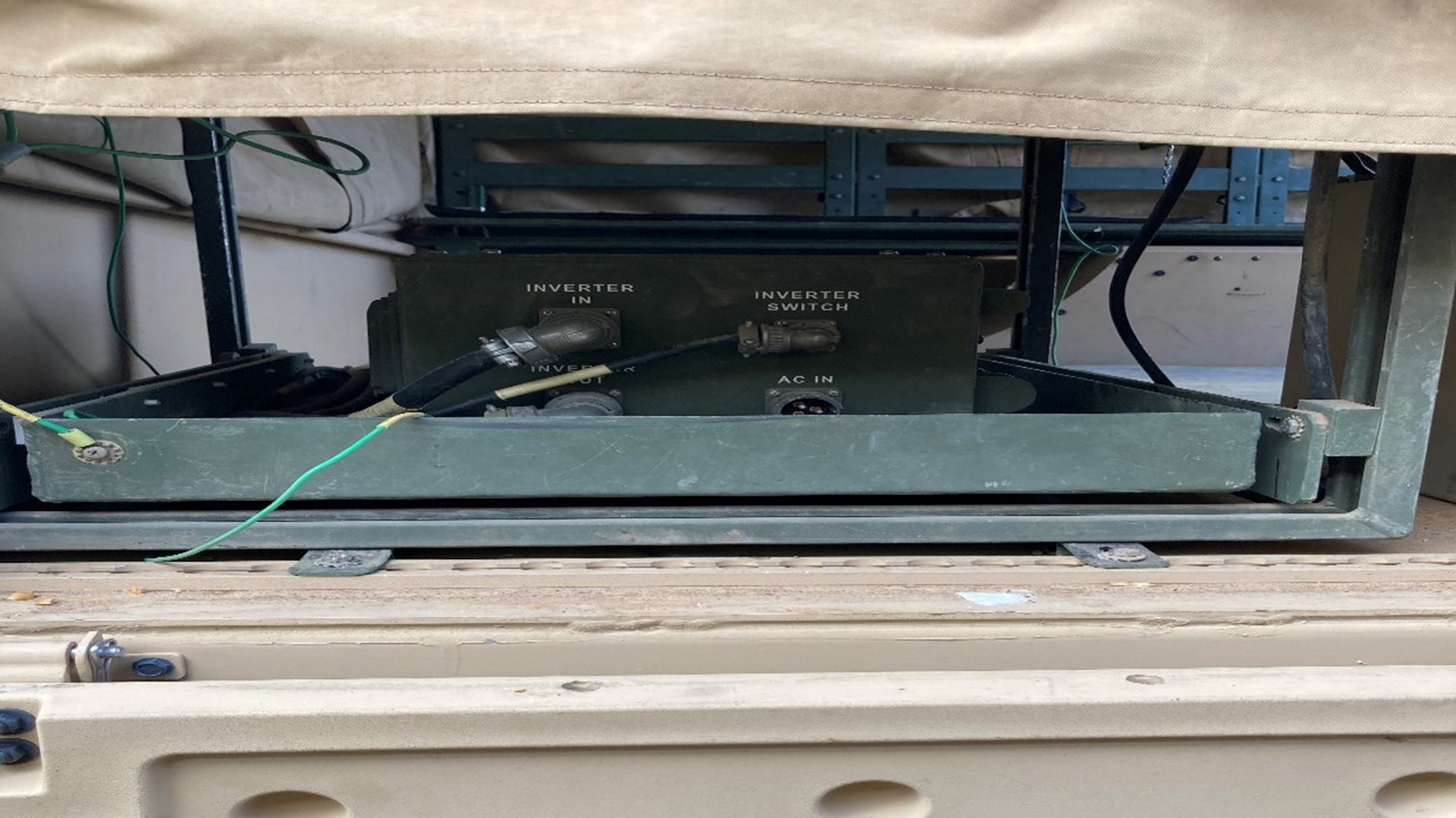

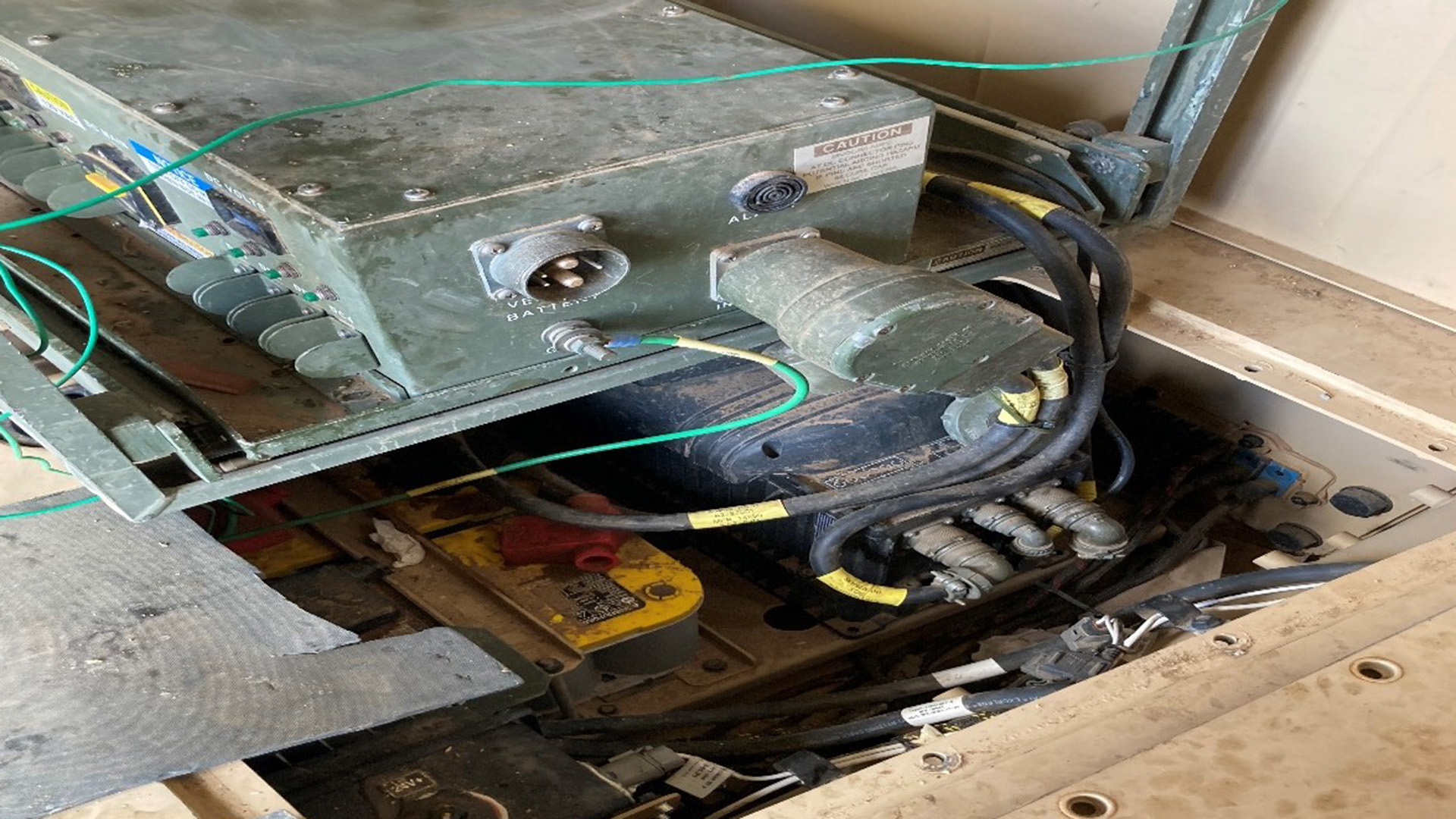
The installation of the table storage system was
a challenge. The table allows the section to have
a suitable workspace and mount the AFATDS for
operations while moving. Since the storage table is
shorter than the wheel well, one bracket was made to
fasten the table to the side rail system and another
bracket was made to secure the table to the bed of
the JLTV. We used additional tie downs to further
secure the table to the JLTV (see images 10, 11 and
12). These modifications replicated the setup used
in the HMMWV, but with the larger bed of the JLTV,
it actually created a larger space for operations and
storage.
The second problem was the most complex:
overcoming the power conversion issue while
enabling FDC operations on the move. We utilized
the JLTV auxiliary battery compartment to mount and
fasten an inverter to the JLTV frame. The installation
included bolting the power inverter to pre-existing holes to secure it and prevent damage while moving.
Additionally, the AC/DC converter was installed on
the bottom of the radio cage. This allowed the FDC
section to monitor the battery voltage and state of
charge, enabling the proper conversion from AC
to DC power (see images 3, 4, 7 and 8). We next
installed a power supply cable that enabled power
to be routed from the JLTV to the inverter/converter.
The power cable was modified from preexisting
W69 cable to support the electrical 24V hook-ups
located on the JLTV. This enabled the FDC to power
all radios and radio mounts from the rear of the
JLTV while moving (see images 3 to 8 and 14). This
process took some coordination with the JLTV
FSRs and the maintenance electricians to ensure
no components were damaged prior to execution.
This substantial breakthrough ultimately resulted
in a highly functional mobile FDC.
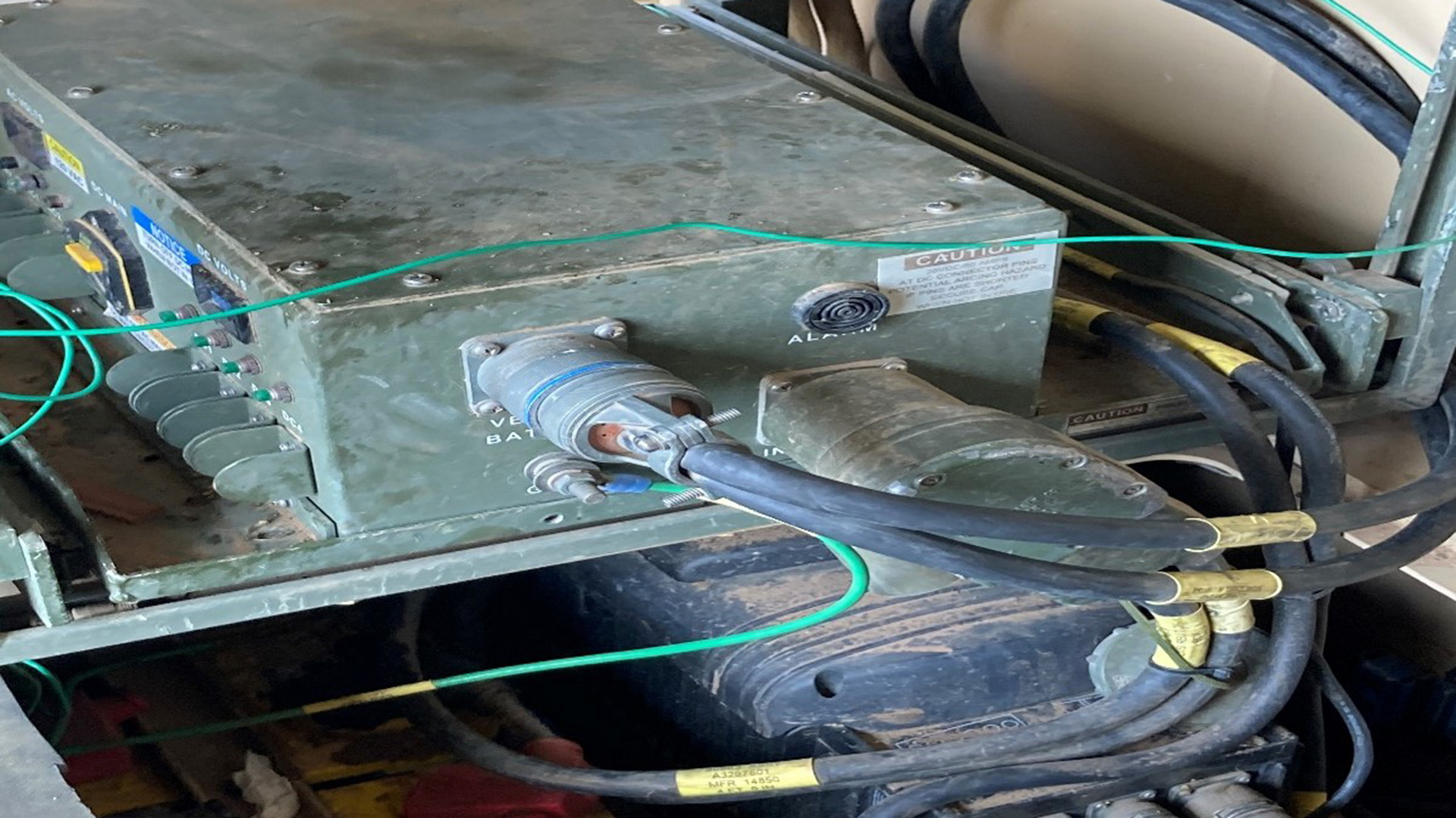
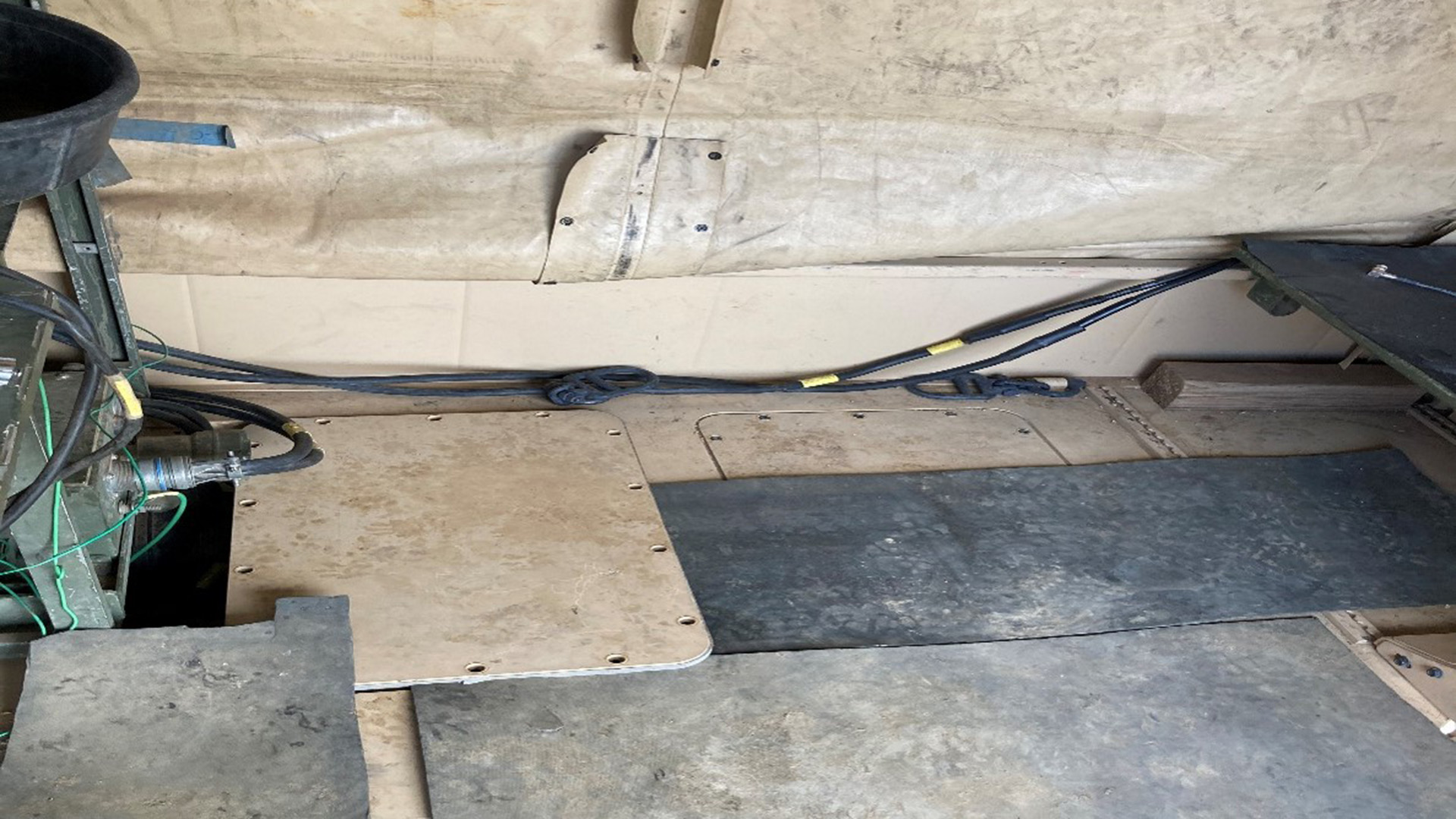
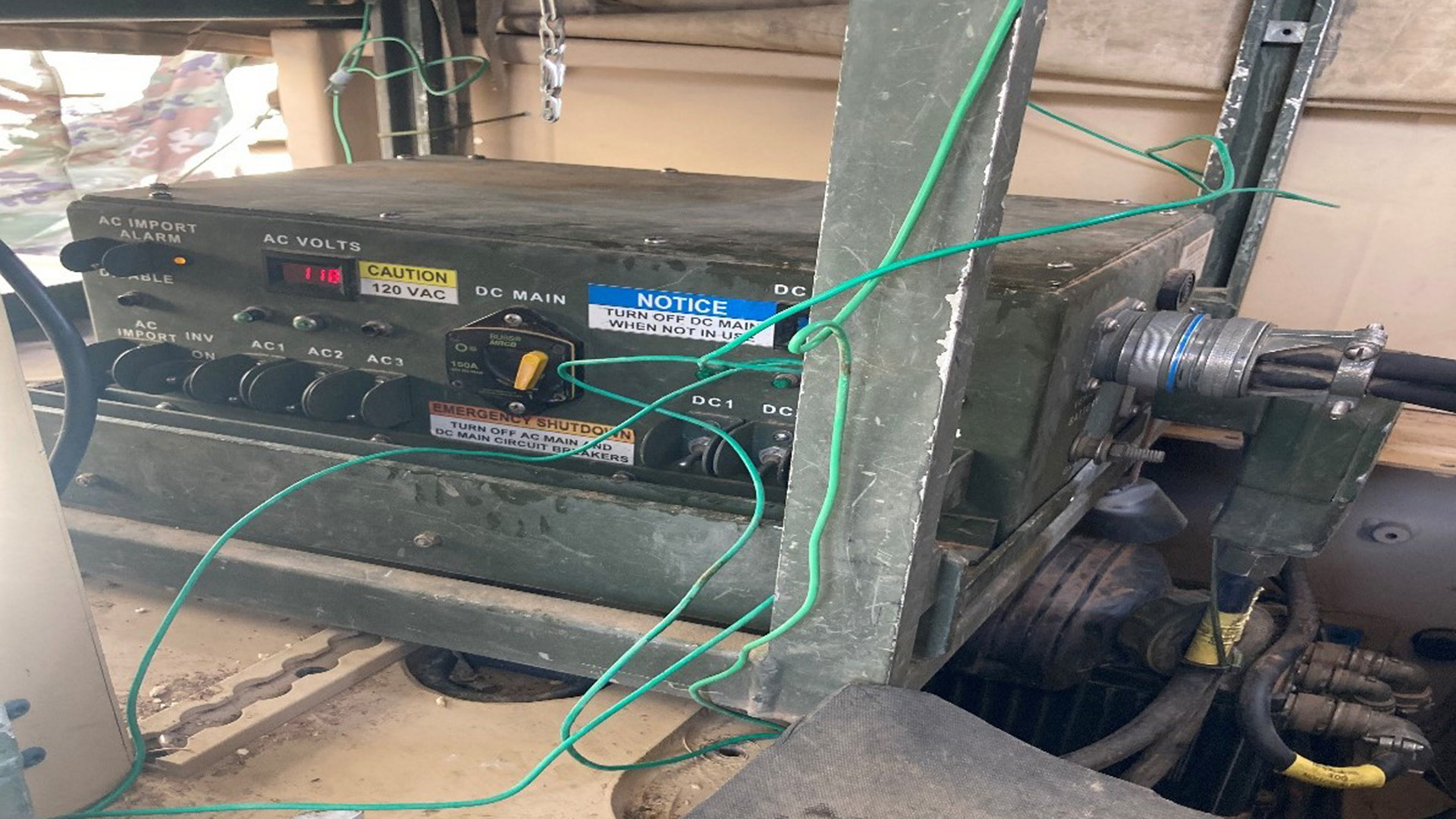
The third problem was the least complex but no
less challenging: how to provide cover for the FDC
to enable noise/light discipline and protection from
weather effects. The two-seater JLTV did not come
with a bow/tarp kit during fielding. To overcome
this, we repurposed a damaged set of LMTV tarps
and bows to create the shelter. The process included
creating 10-inch steel pole adapters to hold the bows
in place on the JLTV frame. Our maintenance team
shortened the cross-members for installation to
create a sturdy cage. After measuring the bed, the
old tarp was cut to length, placed over the bows and
stitched with cord to increase the overall strength.
The organic rubber fasteners were used to fasten the
tarp to the bows. Lastly, two independent CGU1Bs
5,000lb straps were used to hold the bows together during the installation (see images 9, 10 and 13).
This resulted in a shelter that looked very similar
to the HMMWV but was wider and taller.
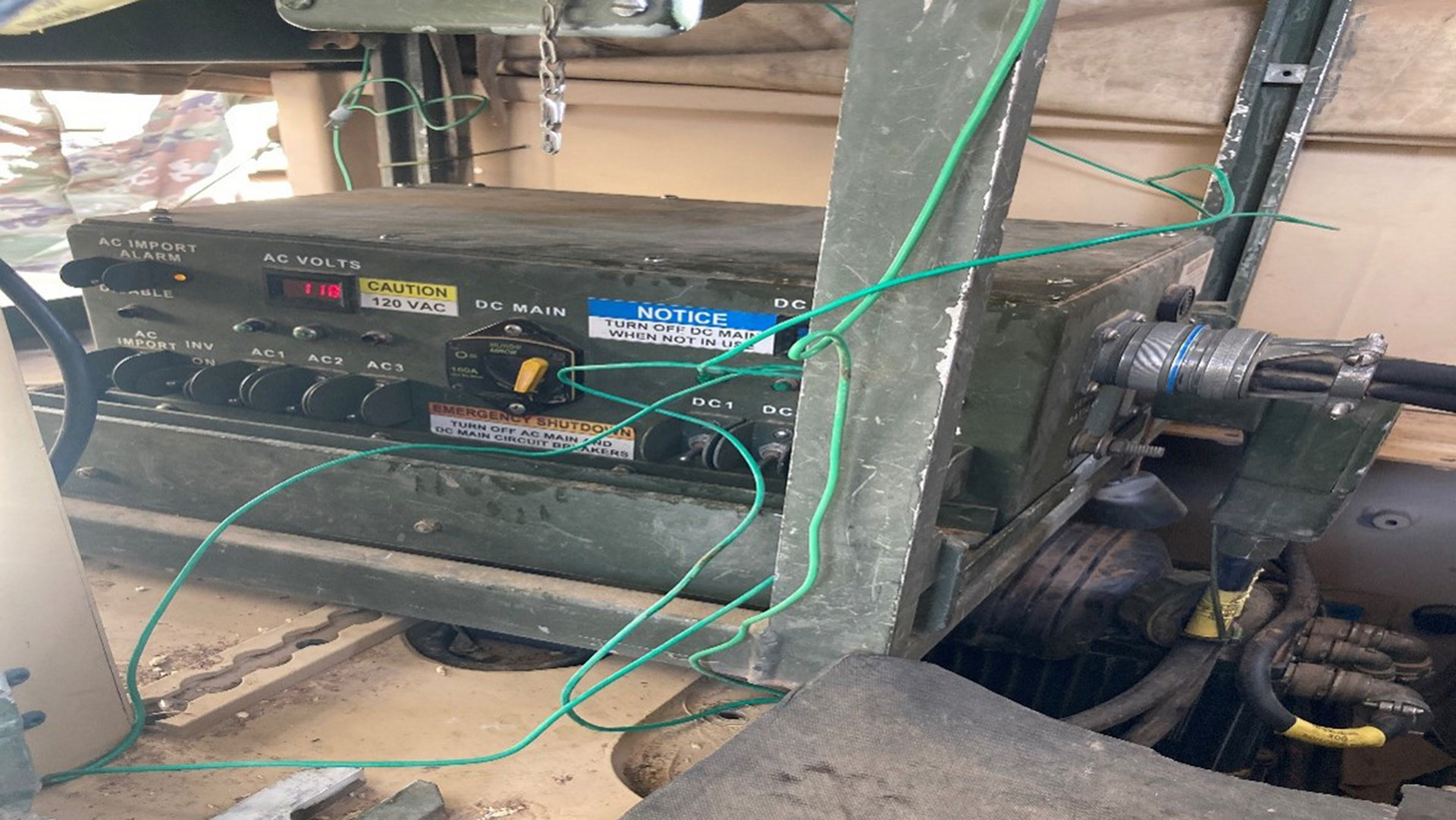
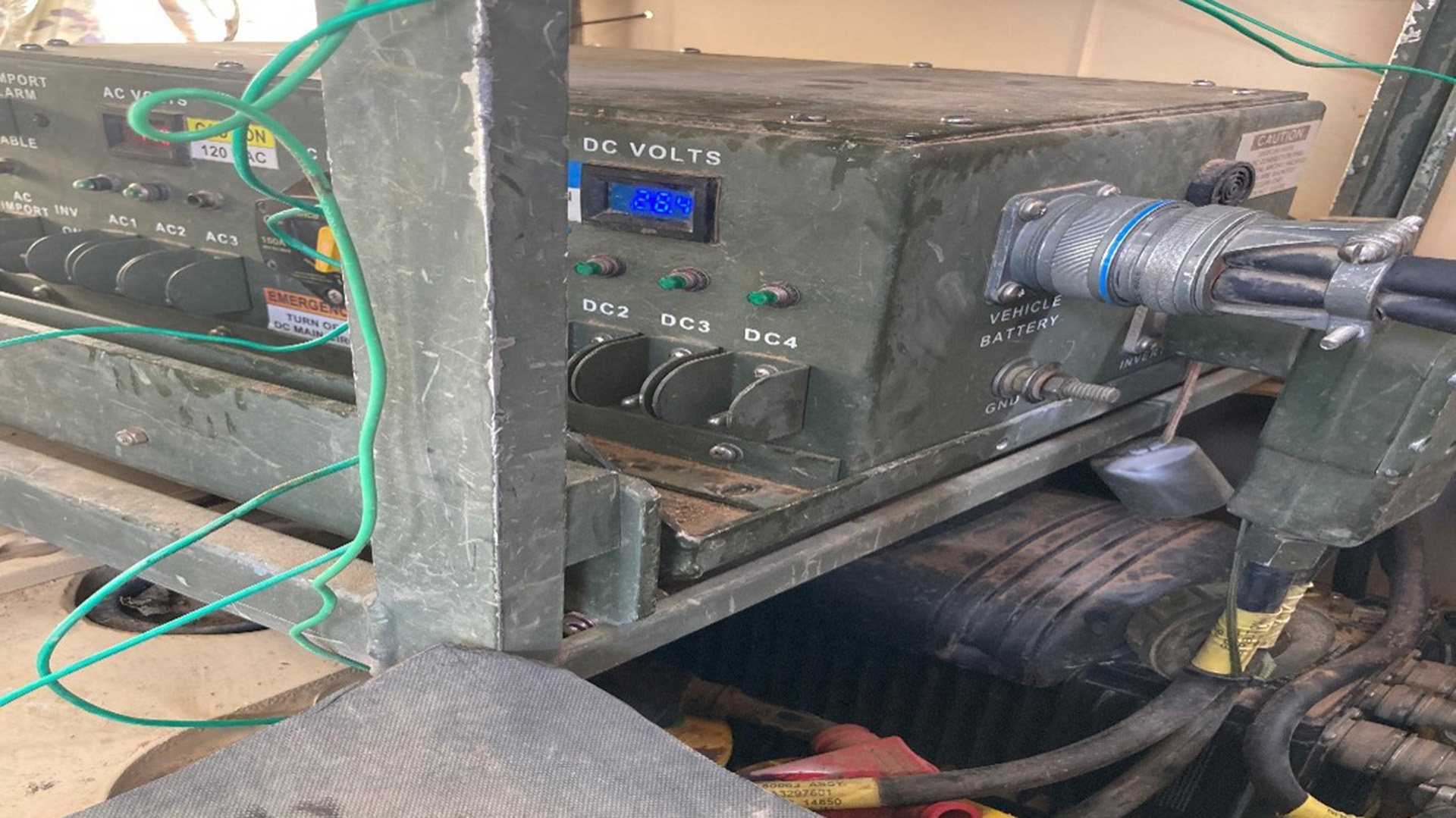
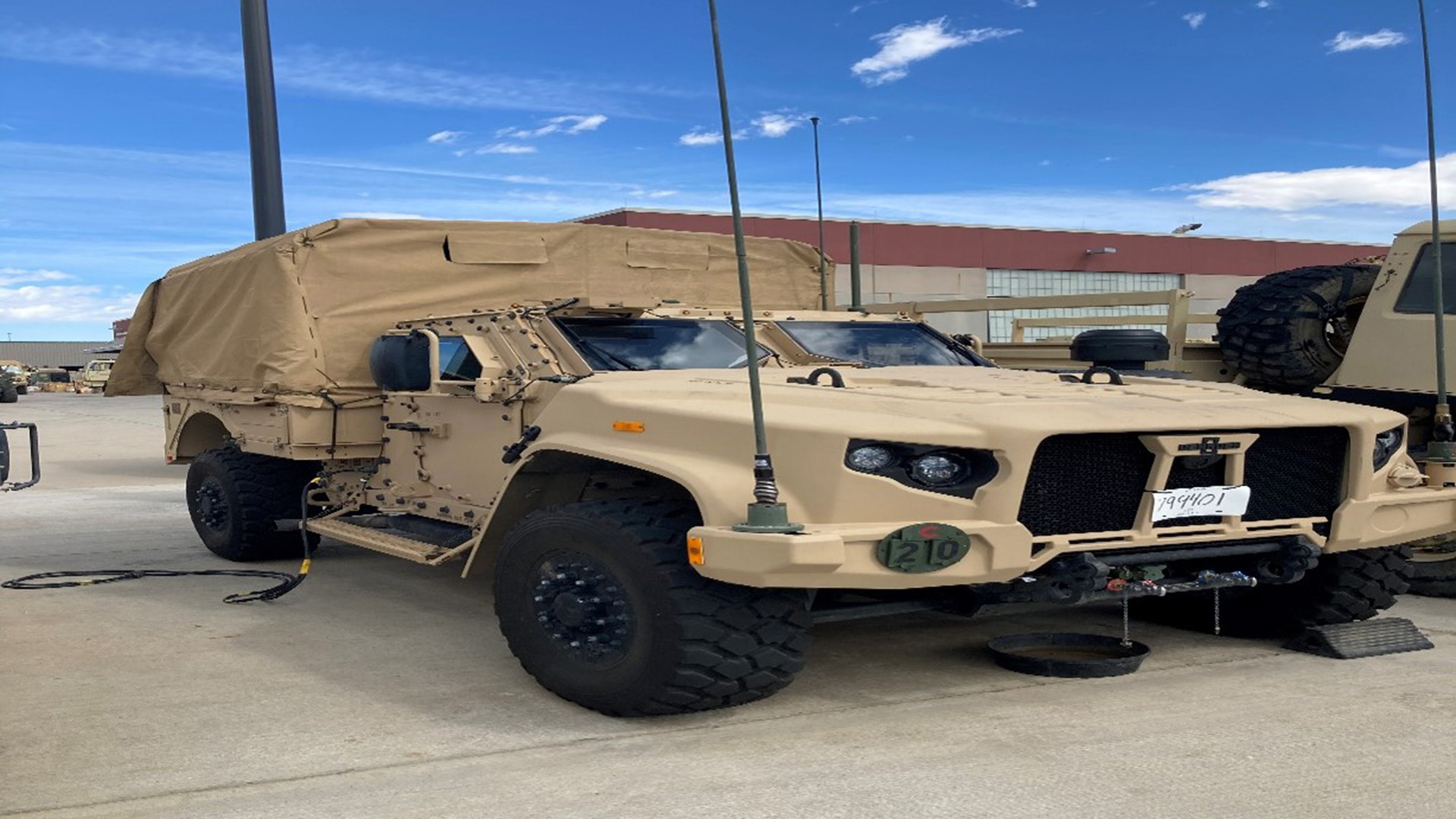
With all three problems solved, 2-77 FA rigorously
tested the new design during its collective training
in preparation for NTC. It passed all road tests
over the rough Fort Carson terrain including steep
hills (both ascending and descending), improved
roads at speed and off-road, rocky terrain. We
took the design to NTC with one battery using the
JLTV FDC, the other batteries using the M-ATV
FDC and our battalion FDC using a M-ATV and
HMMWV mix (we weren’t fielded enough JLTVs
to replace our entire HMMWV fleet). At NTC, the
JLTV FDC outperformed the M-ATV FDCs used
in the other batteries. In all metrics, the results
indicated that our modifications to the JLTV enabled
the FDCs to operate as good as, and in many cases
better than, both the legacy HMMWV FDCs and the
temporary M-ATV FDCs. They had more consistent
and reliable communications, efficient workspace
and better noise and light discipline than both the
M-ATV and the HMMWV. This became the battalion
standard, and after NTC, we implemented it across
all batteries. A year later, we exercised a JLTV FDC
pure formation at the Joint Readiness Training
Center (JRTC). Again, the JLTV demonstrated its
superiority to the HMMWV and M-ATV enabling a
very successful JRTC rotation.
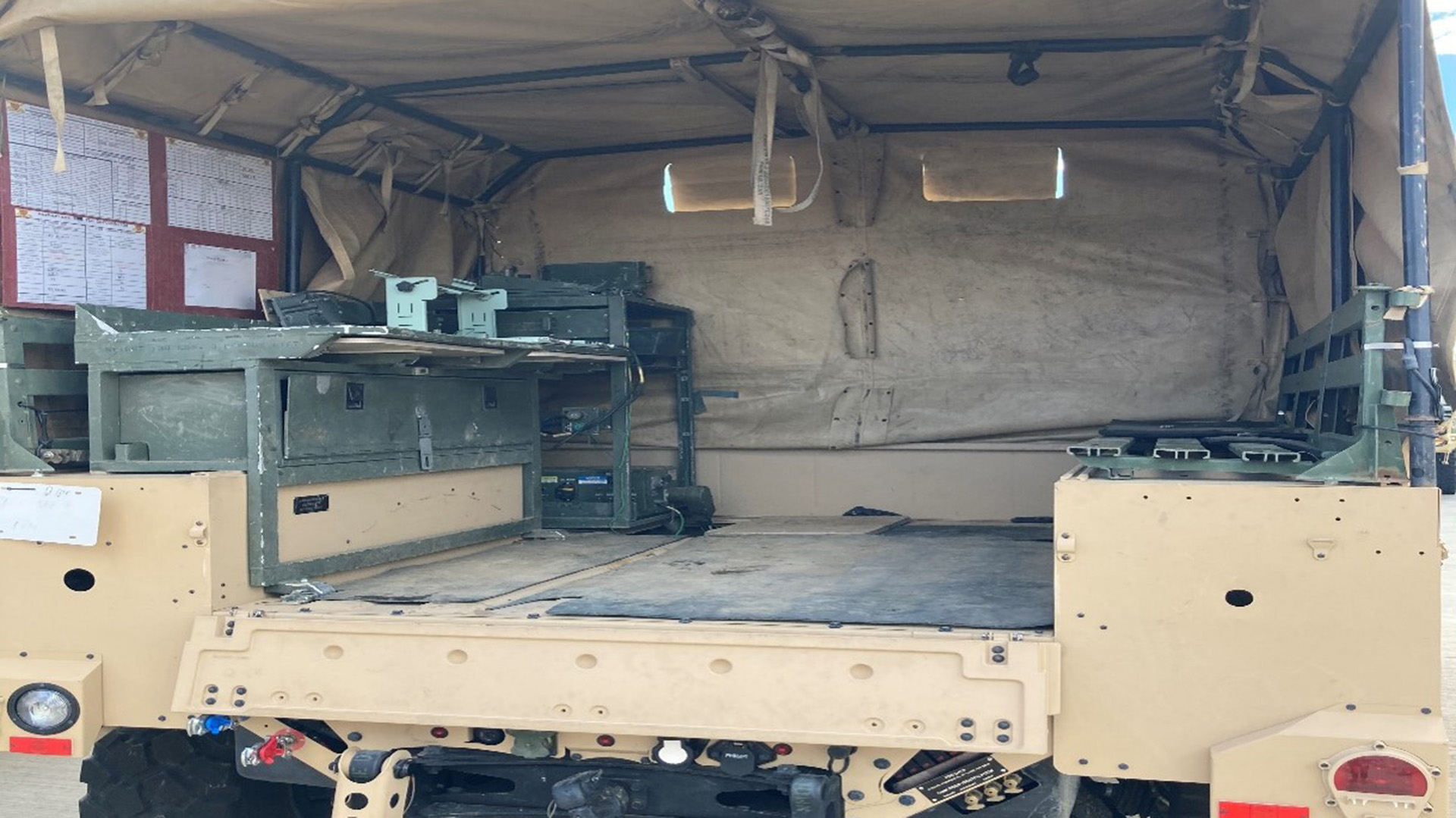
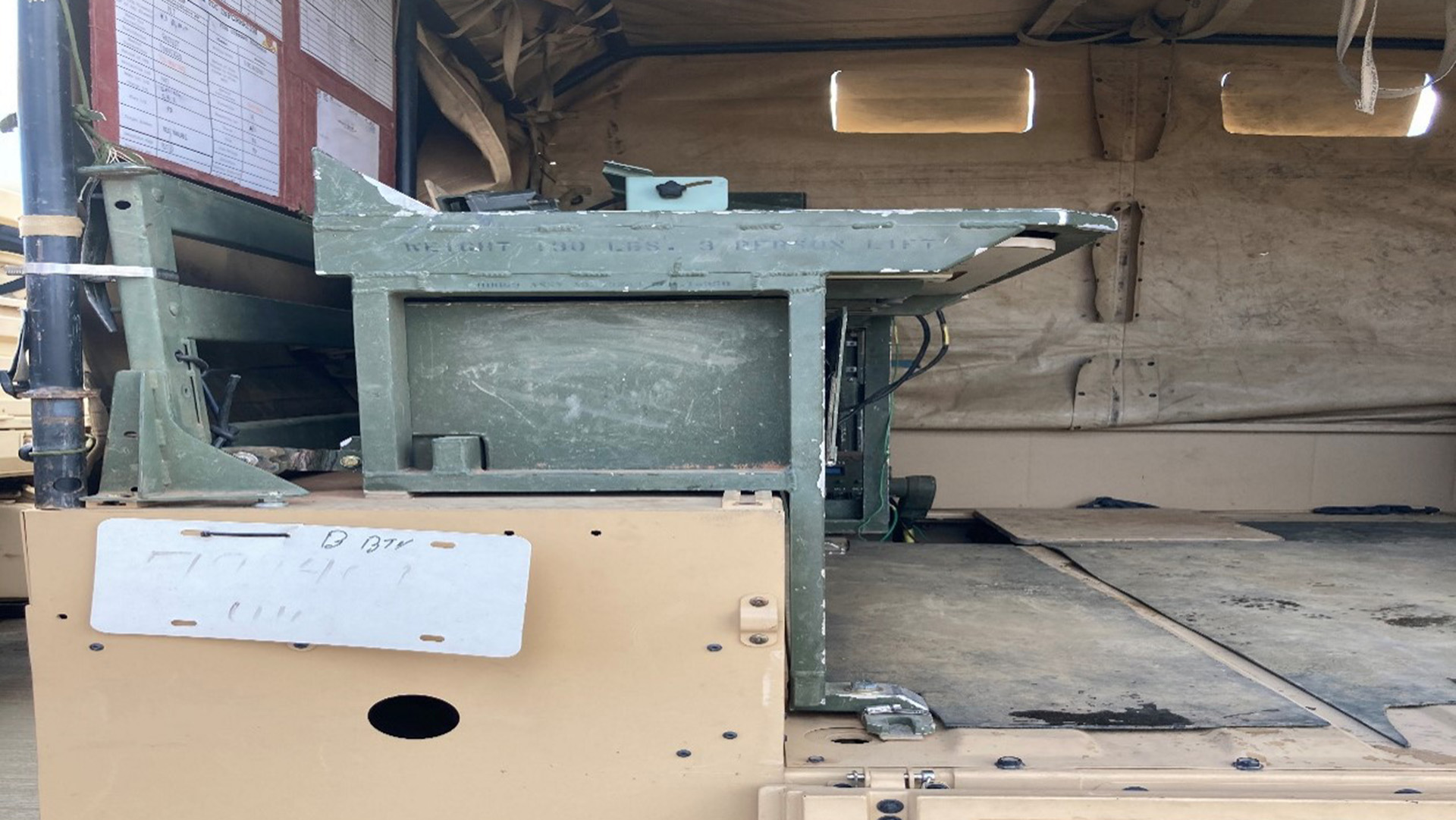
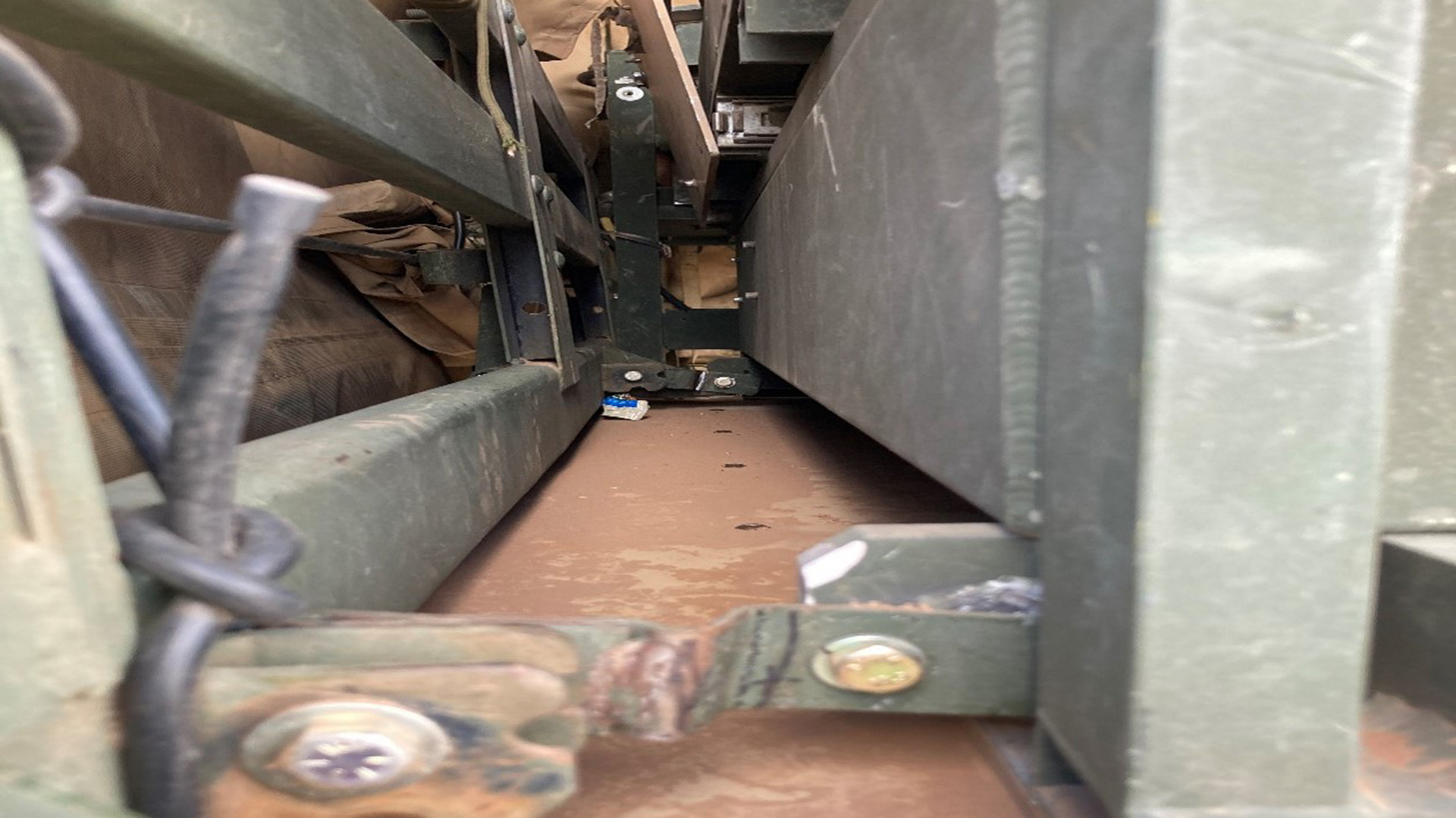
As the Army continues to roll out JLTVs, this
article offers a solution to converting it into an
FDC until conversion kits, or a new JLTV FDC kit,
becomes standardized and available for installation.
I hope you take this article not as an indictment
on the modernization process but rather a credit
to the ability of Soldiers and leaders to adapt and
overcome friction to meet mission requirements.
The JLTV is the new HMMWV, and while the initial
introduction to our brigade did not provide the
necessary equipment for a seamless transition,
with mostly pre-existing equipment, we were able
to convert it into the effective tool it was designed
to be: a lethal FDC capable of providing timely and
accurate fires.
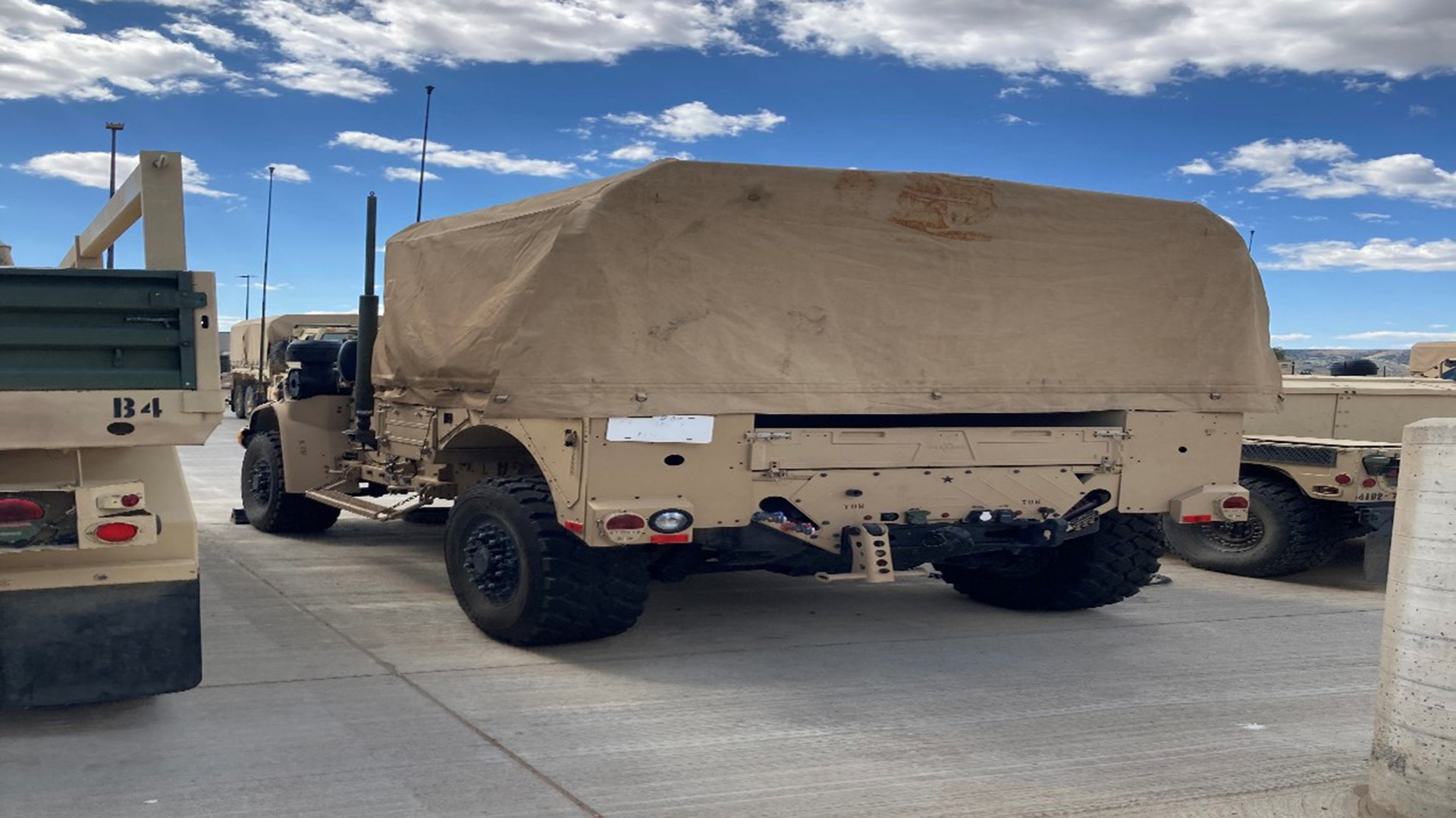
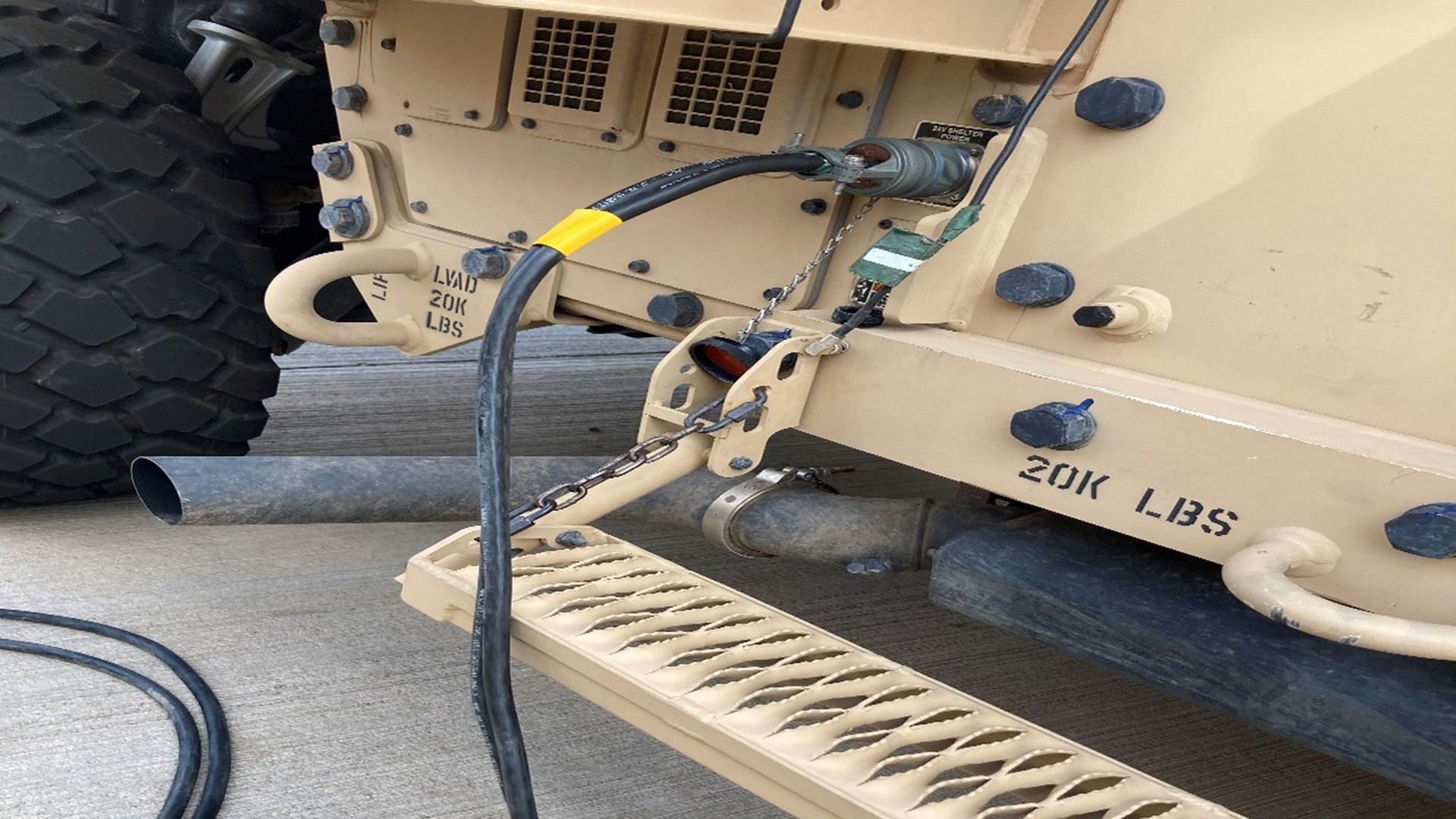
Authors
MAJ John Meier is currently the Chief of Fires for Security
Assistance Group – Ukraine. He served as the Battalion S3 and
XO for 2-77 FA from 2021-2023 during the transition from an
Infantry Brigade Combat Team to a Stryker Brigade Combat Team
at Fort Carson, Colorado.
LTC Adam Ropelewski is currently the Senior Fire Support
Trainer at the Joint Multinational Readiness Center in Hohenfels,
Germany. He served as the Battalion Commander for 2-77 FA from
2021-2023 at Fort Carson, Colorado.
SFC Michael Limpert is currently the senior 13J Trainer at the
Joint Multinational Readiness Center in Hohenfels, Germany. He
served as the 2-77 FA Digital Master Gunner and BN FDC NCO
from 2021-2023 during 2SBCT’s transition from an IBCT and
was largely the impetus in making the FDC conversion successful.